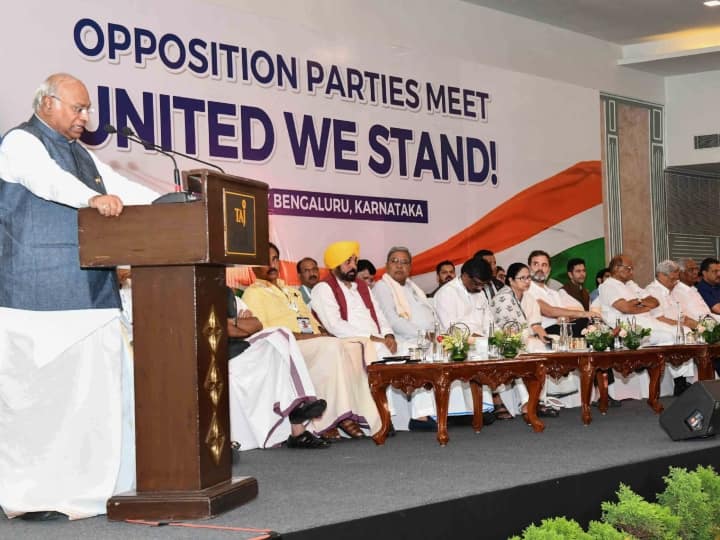
‘When I came out of the bogie of the train, I saw that people were bleeding, no one had legs, no hands… There were many whose entire face had been disfigured’. This incident is of an eyewitness aboard the Coromandel Express.
On Friday (June 2) at seven in the evening, three trains collided with each other in Balasore, Odisha. In this accident, the maximum damage was done to the passengers aboard the Coromandel Express. So far 267 people have been confirmed dead. More than 900 people are injured.
Odisha CM Naveen Patnaik has announced one day state mourning after the train accident. TMC leader Abhishek Banerjee has sought resignation from Railway Minister Ashwini Vaishnav.
Mamta Banerjee has described this accident as the biggest accident of the century and raised questions on the Ministry of Railways. Questions are also being raised on social media about the Railways and its security.
This is not the first time in India, when railways is in headlines due to an accident. More than 31 railway accidents have been registered in the last 42 years.
Scary pictures of the scene and hospital after the accident

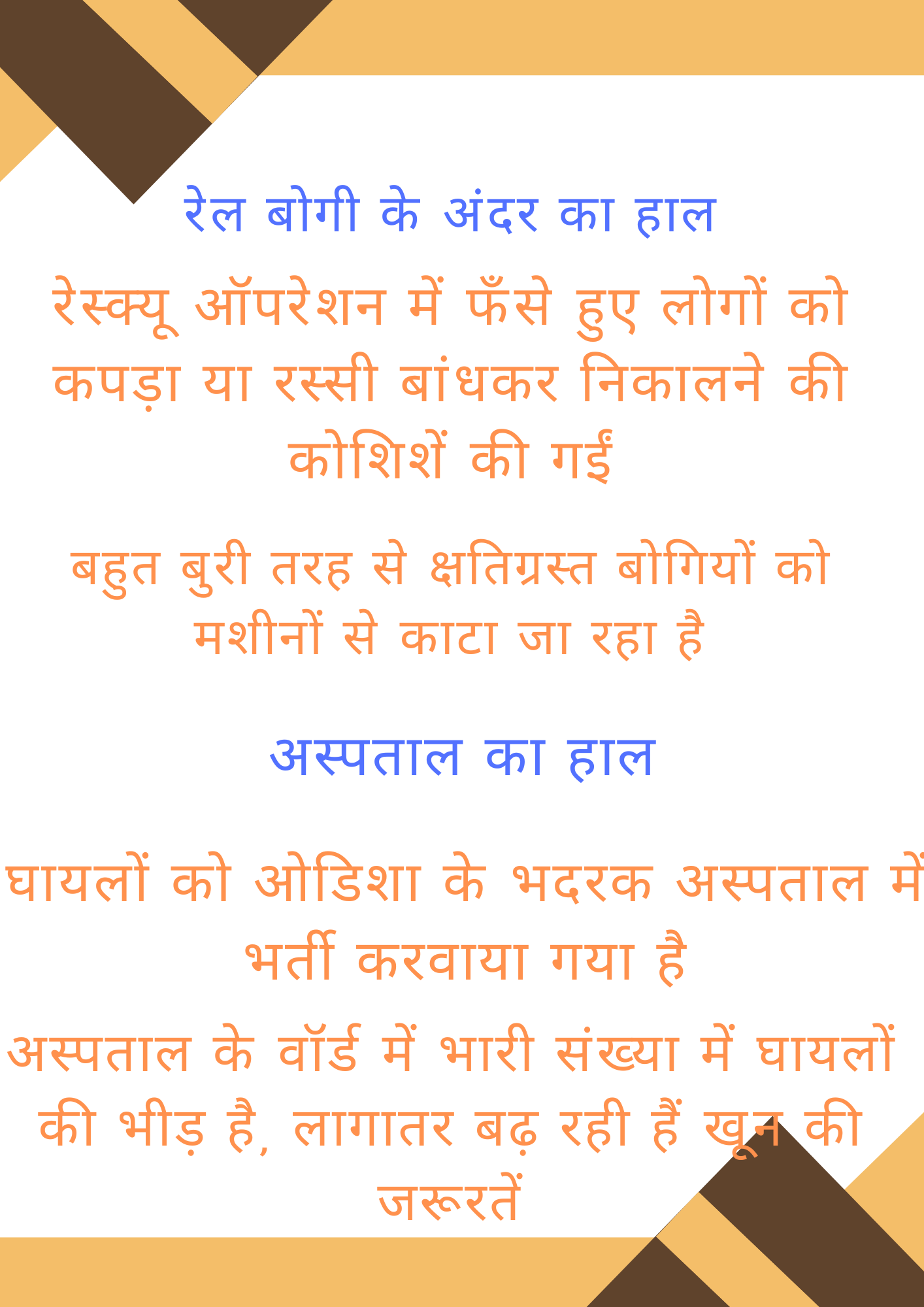
According to the railways, more than 12 crore people travel by train every day in India. These 12 crore people ride 14, 000 trains every day. Despite government efforts to improve rail safety, several hundred accidents occur every year on India’s railways. Most cases are attributed to human error or the use of outdated signaling equipment.
A look at the biggest train accidents ever in the country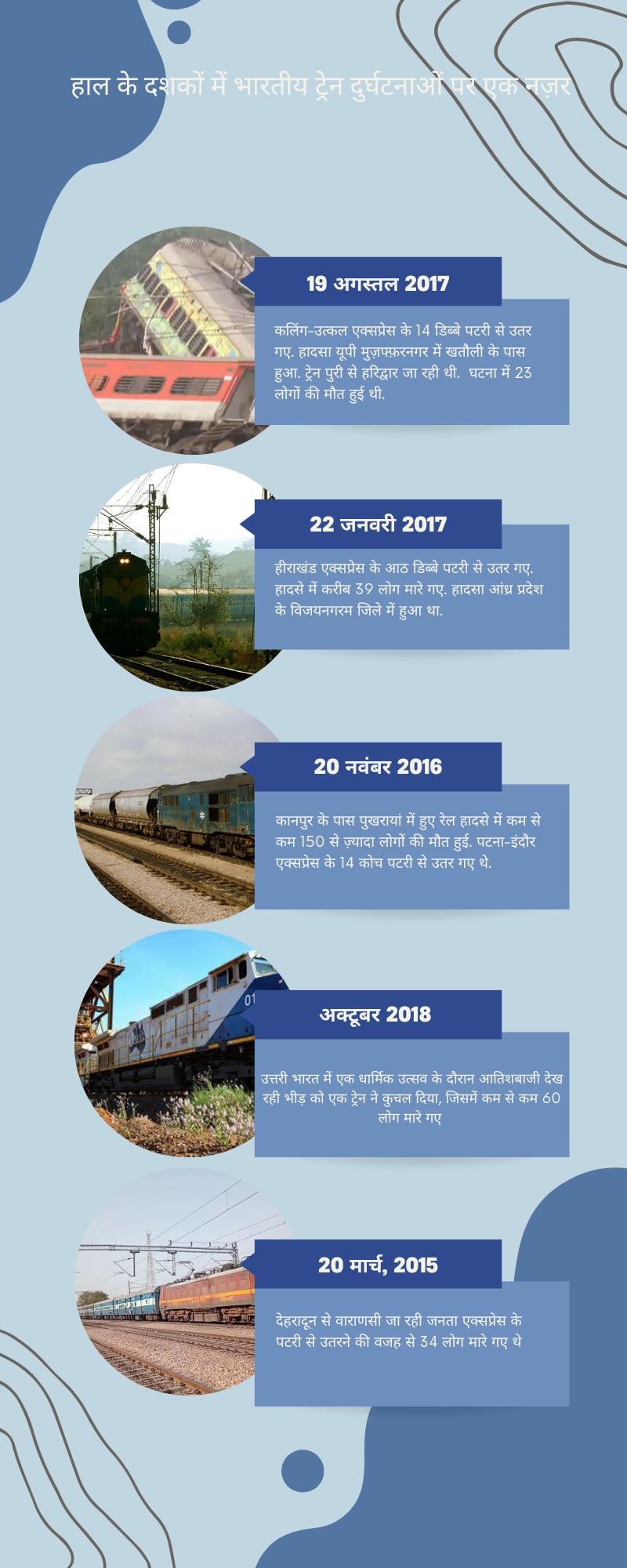
Between 2010 and 2014, several incidents of train collision and overturning were reported.
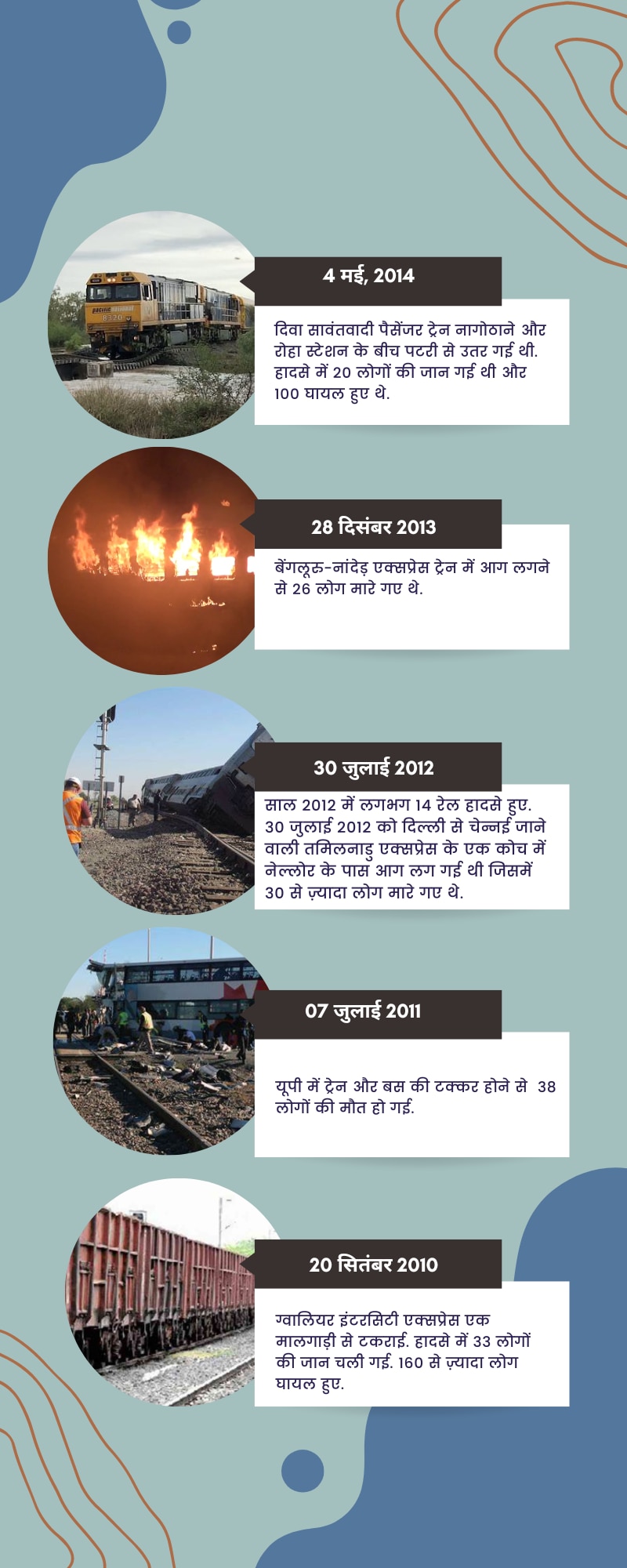
In the last nearly a decade, India has witnessed several rail accidents, which have resulted in huge loss of life and property.
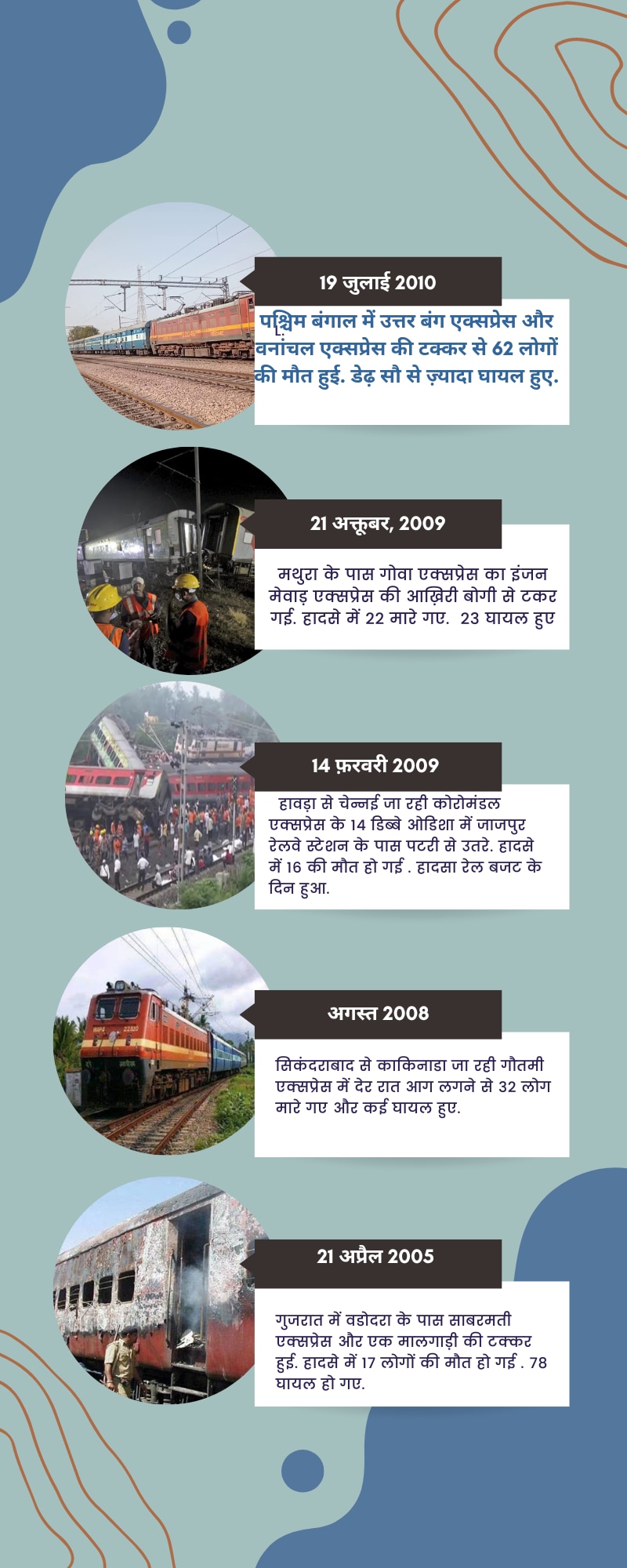
India uses rail on the largest scale in countries around the world. According to a 2018 study published in the American Economic Review, almost all of India’s rail lines (98 percent of the total) were built between 1870 and 1930.
The most dangerous accident in the history of Indian Railways happened in 1981. A passenger train derailed while crossing a bridge in the state of Bihar. Its cars drowned in the Bagmati river. 800 passengers died in the accident. The bodies of many victims have not been found till date.
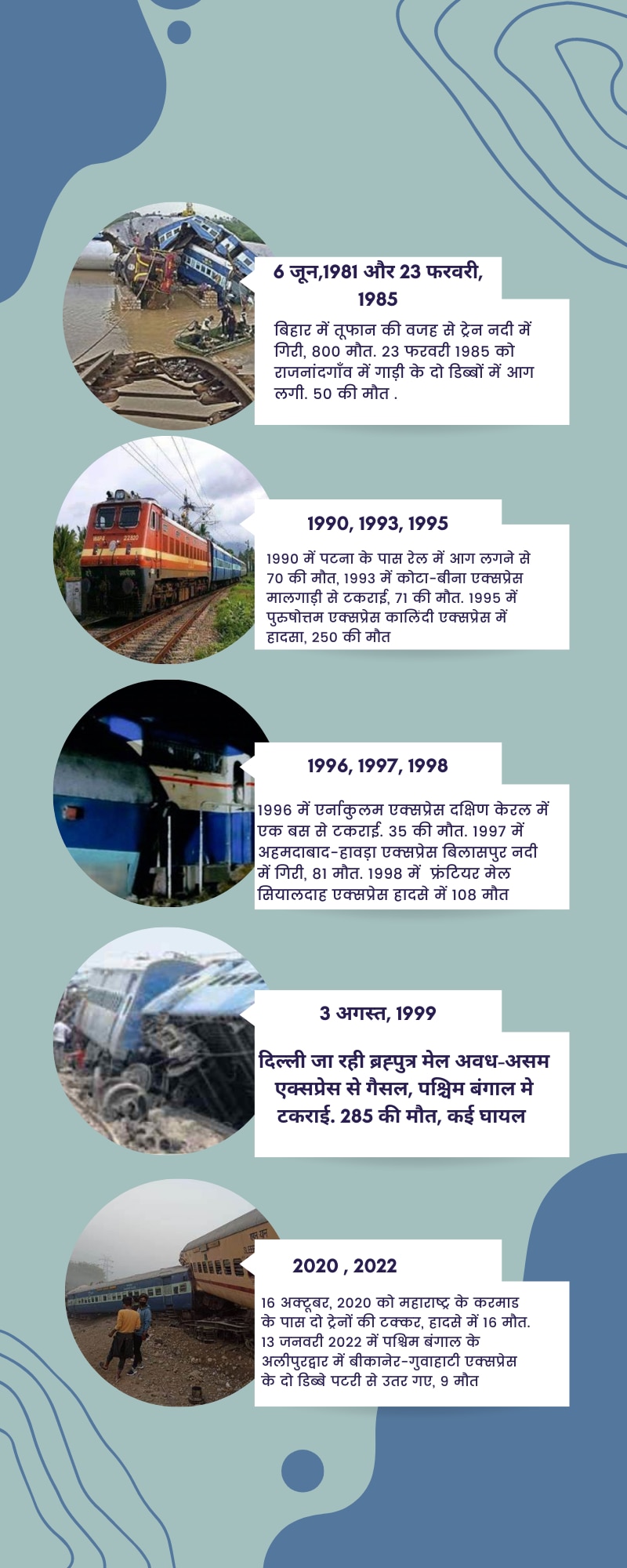
From 1980 to about 2002, an average of 475 train derailments occurred every year. Rail safety has improved in recent years. The total number of serious train accidents has come down from 300 in two decades to 22 in 2020. Till 2017, every year more than 100 passengers were killed in train accidents.
Despite improvements, dangerous accidents keep happening. In 2016, 14 train cars derailed in the middle of the night in the northeastern state of India. More than 140 sleeping passengers died in the accident. 200 passengers were injured. The officials of that time had said that the accident happened due to ‘fractures’ in the tracks. In 2017, at least 36 passengers were killed and 40 others were injured when a late-night train derailed in southern India.
What work did PM Modi do towards improving transport
In the year 2019, PM Modi took steps towards the security of railways. In the year 2019, many underpasses were built and more signal conductors were posted. Due to which railway accidents have reduced.
When Shastri-Nitish left the post after the train accident
Due to the train accident in India, 2 ministers have left their posts or have offered to leave. During the Nehru government, Lal Bahadur Shastri resigned from his post taking moral responsibility for the train accident.
Similarly, in Atal Bihari’s government, Nitish Kumar left the post after the train accident. Similarly, now the resignation of Ashwini Vaishnav is being sought. However, he has not made any comment about leaving the post.
In the last 9 years, 4 railway ministers have been changed in the Modi government. These include the names of Sadananda Gowda, Suresh Prabhu, Piyush Goyal and Ashwini Vaishnav.
Now about railway in 9 points…
1. History of Railways in India – After independence in 1947, the Government of India spent a lot on railways, as about 40% of the railway tracks were located in Pakistan. After independence, many railway tracks were laid in India.
2. Nationalization of Railways- After independence, 75% of public transport and 90% of freight trains in India were made by the Indian Railways. The Government of India needed to prepare a separate Rail Budget. Indian Railways was nationalized in 1951, which is now the second largest rail network in Asia and the fourth largest in the world.
3. Reservation in Indian Railways- Indian Railways had started the system of reserving seats for passengers in the early days. Initially, the facility of reservation was given to passengers traveling long distances. During that time there was no computer and passengers had to stand in long queues. In 1986, the first computerized reservation system was introduced by the Indian Railways in New Delhi.
4. First live telecast of Rail Budget- After independence, the government started making a rail budget every year. The first live telecast of the Rail Budget took place on March 24, 1994. From 2004 to 2009, Railway Minister Lalu Prasad Yadav presented the budget six times in his entire tenure. The current Chief Minister of West Bengal, Mamata Banerjee was the first woman in Indian history to hold the post of Railways.
5. First AC Diesel Electric Multiple Unit- During the first term of PM Modi, Railway Minister was Suresh Prabhakar Prabhu. Prabhu had introduced air conditioned diesel electric multiple units for the first time in the country. In June 2005, India’s first air-conditioned DEMU train was launched in Kochi.
6. First solar powered train- Indian Railways started solar powered trains. The solar powered train helps reduce carbon dioxide emissions by up to 2.7 tonnes per year.
On 14 July 2017, Indian Railways launched the first DEMU (Diesel Electric Multiple Unit) from Safdarjung station in Delhi. The train travels from Sahrai Rohilla in Delhi to Farukh Nagar in Haryana. The train has a total of 16 solar panels.
7. India’s first CNG train- Ministry of Railways introduced first CNG gas on Rewari-Rohtak section of Northern Zone in January 2005 for adoption of green fuel.
8. India’s fastest train “Vande Bharat”- The fastest train of Indian Railways is known as “Train 18” or commonly known as Vande Bharat. It is fully air conditioned. Goes from Delhi to Varanasi. It is the only train to travel at 180 kmph under Make in India initiative.
9. First double stack container train- The world’s first double stack hall container train from New Ateli to New Kishanganj in Haryana started in January 2021.

